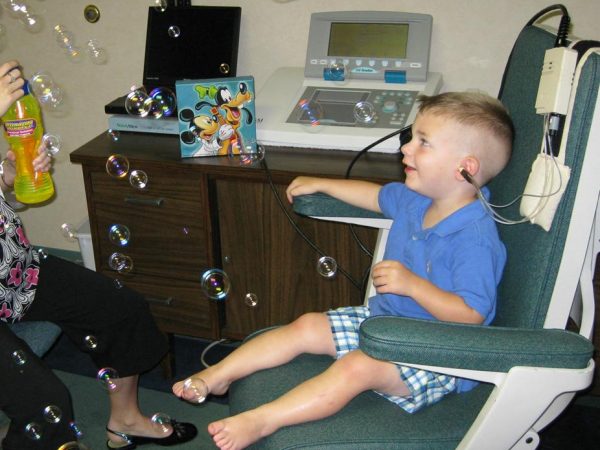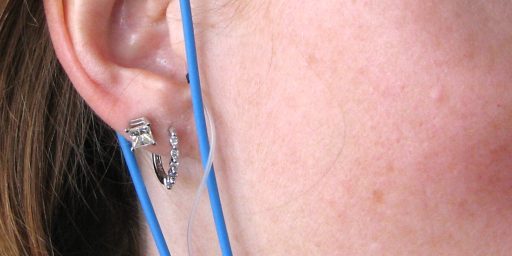A little about us
Bethany Porter, AuD. – Dr. Porter graduated from West Virginia University in 2006 with her Doctorate of Audiology. As a graduate student at WVU, she worked at a variety of clinical settings and did scholarly work on “Slim-tube Open-ear Hearing Aid Fittings”. She is a member of the American Academy of Audiology and of the West Virginia Audiology Association. She sees all ages, including youngsters for auditory processing evaluation.

Gary Harris, Ph.D. – An audiologist since 1976, I’ve done most things related to that, from teaching, to testing babies hearing, to investigating audibility questions in legal matters. The most complicated has been fitting hearing aids. Despite technical advances, the most important thing to how well you hear with hearing aids remains the sound delivered to your cochlea, and that depends on the unchanged fundamentals: frequency response, gain & output, venting and physical fit.
.


The HEARING Place is large enough to have all the tools needed to make a thorough diagnosis, yet small enough to care for you as an individual. Hearing aids for those in the greater Charleston area.
Hearing aid truisms

- Dogs like hearing aids. They like to bite them.
- Ears and impaired hearing come in all variations. What works well for your neighbor will not necessarily work well for you.
- Be concerned about who is fitting you with hearing aids, not who manufactured the hearing aids. Why? See the next bullet point.
- What matters most to how well you understand speech with hearing aids is the exact nature of your hearing impairment and the sound produced at your ear by the hearing aid. There is no “magic” contained within any particular make, model or style of hearing aid. Yes, the particular hearing aid can make a big difference, but the “magic” is in the process and procedures that lead to producing the proper sound for your specific hearing.

- Your voice will sound different to you.
- If you “hear but don’t understand”, you probably have a hearing impairment for which hearing aids are designed.
- Hearing everything, or hearing more than what you heard without hearing aids, takes time to get used to.
- If you hear the background noise without hearing aids, you will hear the background noise with hearing aids.
- The state of the science for fitting hearing aids is with real-ear, probe-microphone measures. This is where a microphone is placed in your ear canal and the sound from the hearing aid is then adjusted for your particular hearing impairment.
- A small percentage of people hear perfect with hearing aids. A small percentage hear hardly anything with hearing aids. Most everyone else falls somewhere in-between.
services and products
Probe-microphone hearing aid measures
The starting picture for our website and the one here shows a real-ear measurement, probe-microphone used to test the hearing aid while it is in your ear. It is the preferred way of making sure that the hearing aid gain and output characteristics are appropriate for your particular hearing impairment. We know hearing and hearing aids.

Our services include:
- hearing evaluation, all ages
- hearing aids and hearing aid repair
- otoacoustic emissions
- visual response audiometry
- tinnitus evaluation
- immittance: tympanometry and acoustic reflex testing, including high frequency tympanometry for infants
- baseline and annual tests for industry
- WV workers compensation
- probe-microphone, real-ear measures for evaluating hearing aids on your ear
- Central Auditory Processing Disorder Evaluation
- hearing protection devices
